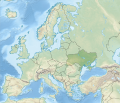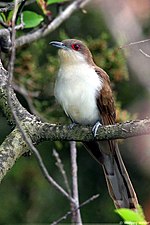The fall webworm (Hyphantria cunea) is a moth in the family Erebidae known principally for its larval stage, which creates the characteristic webbed nests...
23 KB (2,604 words) - 16:50, 11 May 2024
take-off. Gregarious caterpillars, such as the forest tent caterpillar and fall webworm, benefit from basking in large groups for thermoregulation. Many flying...
11 KB (1,327 words) - 11:04, 6 January 2025
sometimes confused with the spongy moth (whose larvae look similar) and the fall webworm (which also builds tents), and may be erroneously referred to as a bagworm...
12 KB (1,516 words) - 20:23, 25 May 2024
dead insects. They are predators of codling moth larvae, and also of fall webworm. Workers may forage in households, but nest in soil mounds. They harvest...
3 KB (336 words) - 19:53, 24 July 2024
larvae—which include the common emerald, lime hawk-moth, sycamore moth, and fall webworm—also eat the plant. The Ancient Greeks and Romans cultivated the mulberry...
30 KB (3,289 words) - 12:42, 1 January 2025
Psychidae. Wikispecies has information related to Psychidae. Bagworm, Fall Webworm or Eastern Tent Caterpillar? Archived 2014-08-20 at the Wayback Machine...
16 KB (1,321 words) - 22:04, 19 December 2024
late summer but generally does no lasting harm to a healthy tree), the fall webworm (also a late-season defoliator), the white flannel moth, the American...
13 KB (1,399 words) - 02:01, 9 January 2025
they include in their diet adelgids, mites, insect eggs (an example is fall webworm eggs) and small larvae. They also eat pollen which may constitute up...
9 KB (1,114 words) - 21:48, 21 May 2024
few species in this subfamily are of economic importance. Even the fall webworm, an abundant and highly polyphagous tree-feeding species that has spread...
22 KB (2,040 words) - 19:36, 12 October 2024
and infect the larva. An example of an insect that it infects is the fall webworm. Baculoviruses are thought to have evolved from the Nudiviridae family...
25 KB (2,859 words) - 05:31, 30 December 2024
October 15, 2024. Fitzgerald, T. D. (March 1, 2008). "Larvae of the fall webworm, Hyphantria cunea, inhibit cyanogenesis in Prunus serotina". Journal...
20 KB (2,076 words) - 08:53, 6 December 2024
caterpillars make their tents in the nodes and branches of a tree's limbs, fall webworms enclose leaves and small branches at the ends of the limbs. The following...
10 KB (1,286 words) - 18:39, 30 October 2024
beetle) [82] Hypera postica (alfalfa weevil) [83] Hyphantria cunea (fall webworm) [84] Icerya purchasi (cottony cushion scale) [85] Latrodectus geometricus...
18 KB (1,022 words) - 03:34, 27 September 2023
generally avoided by Vespula species). They also prey on larvae of the fall webworm, as well as young hummingbirds. In general, they are not attracted to...
10 KB (1,247 words) - 02:56, 10 July 2024
Workers use this ability to scavenge for dead insects such as earwigs and fall webworm larvae, as well as live arthropods. They are also frugivores, obtaining...
26 KB (3,214 words) - 22:03, 13 August 2024
Eulophidae. Chouioia cunea is considered an important parasite of the fall webworm in China, where the moth is an invasive species. Edosa, Tariku T.; Jo...
2 KB (128 words) - 21:35, 10 April 2024
trees eventually die. The walnut caterpillar (Datana integerrima) and fall webworm (Hyphantria cunea) are two of the most serious pests, they commonly eat...
42 KB (4,873 words) - 02:01, 9 January 2025
(western flower thrips) Hypera postica (alfalfa weevil) Hyphantria cunea (fall webworm) Icerya purchasi (cottony cushion scale) Linepithema humile (Argentine...
314 KB (23,465 words) - 21:41, 6 December 2024
cagnagella and the ugly nest caterpillar, Archips cerasivoranus. The fall webworm Hyphantria cunea, is a patch restricted forager during the initial stages...
13 KB (1,833 words) - 18:57, 9 December 2023
(Gray Hairstreak), Zerene cesonia (Southern Dogface), Hyphantria cunea (Fall Webworm Moth), and Petrophila jaliscalis, the "Jalisco Petrophila." The larvae...
70 KB (9,800 words) - 03:24, 24 August 2024
insects such as the forest tent caterpillar (Malacosoma disstria), the fall webworm (Hyphantria cunea), and the spruce budworm (Choristoneura fumiferana)...
6 KB (538 words) - 20:19, 14 November 2022
bollworms, boll weevils, spotted cucumber beetles, sorghum midges, fall webworms, cotton leaf worms, cotton fleahopper, tarnished plant bugs, stink bugs...
32 KB (3,229 words) - 18:34, 27 November 2024
Ichneumonidae. It is a parasite of the webworm caterpillar in North America. T. morio adults lay their eggs inside webworm caterpillars by piercing them with...
4 KB (350 words) - 14:02, 7 August 2024
pine bark beetle) Hypera postica (alfalfa weevil) Hyphantria cunea (fall webworm) Icerya purchasi (cottony cushion scale) Linepithema humile (Argentine...
34 KB (2,081 words) - 02:29, 18 April 2024
O.; W. B. Peck; M. Tadic (July 1967). "Spiders Associated with the Fall Webworm, Hyphantria cunea (Lepidoptera: Arctiidae)". Journal of the Kansas Entomological...
20 KB (1,892 words) - 00:53, 28 August 2024
1998). "Isolation and characterization of immune-related genes from the fall webworm, Hyphantria cunea, using PCR-based differential display and subtractive...
8 KB (866 words) - 17:59, 10 March 2023
widely considered as invasive. Box tree moth Colorado potato beetle Fall webworm Asian ladybeetle Horse-chestnut leaf miner Russian pig-flies Megachile...
4 KB (295 words) - 03:41, 15 December 2024
patterns have also been observed during outbreaks of tent caterpillars, fall webworms, and cicadas. When they are a couple of days old, the chicks can make...
19 KB (2,003 words) - 07:50, 9 October 2024
Acantholyda erythrocephala (redirect from Pine false webworm)
Pamphiliidae commonly known as the red-headed pine sawfly or the pine false webworm. Native to Europe, it has been introduced into North America where it has...
4 KB (487 words) - 16:03, 1 June 2024
brown tiger moth 8139.1 – Spilosoma danbyi 8140 – Hyphantria cunea, fall webworm moth 8141 – Euerythra phasma, red-tailed specter moth 8142 – Euerythra...
39 KB (3,697 words) - 16:56, 18 February 2024

























